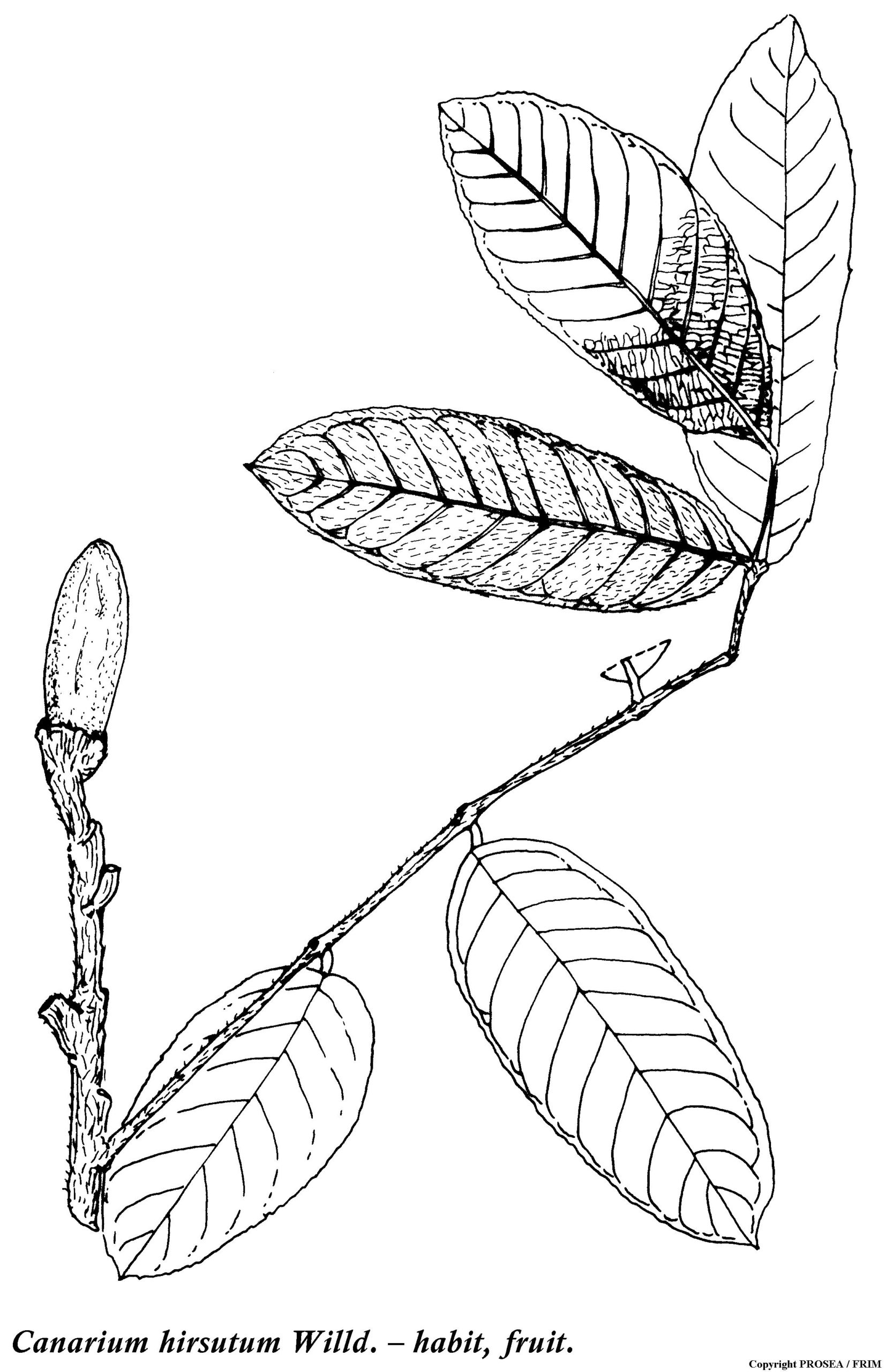Canarium hirsutum Willd.
Family
Burseraceae
Synonyms
Canarium hispidum Blume, C. multipinnatum Llanos, C. subcordatum Ridley.
Vernacular Names
| Malaysia | Kedondong (General), damar degun (Peninsular), kambayau burong (Sabah). |
| Indonesia | Ki bonteng (West Java), kanari jaki (northern Sulawesi), mede-mede (Moluccas). |
| Philippines | Dulit (General), bakayan (Panay Bisaya), hagushus (Bikol). |
Geographical Distributions
Peninsular Malaysia, Sumatra, Java, Borneo, the Philippines, Sulawesi, the Moluccas, New Guinea, the Caroline Islands (Palau) and the Solomon Islands.
Description
Canarium hirsutum is a medium-sized, sometimes large tree that can reach up to 32(-48) m tall and with straight bole. It is branchless for up to 24(-36.5) m, measure up to 60(-200) cm in diametre and usually absent or with very small buttresses. The bark surface is greyish-brown to dark brown in colour. The stipules are absent or present and inserted at the base of the petiole.
The leaves are with 9-27 leaflets, thick rachis with sharp edges, gradually to rather abruptly short-acuminate leaflets at the apex, entire margin, variably pubescent to hairless and with 12-30 pairs of the secondary veins.
The inflorescence is an axillary where the male one is paniculate while the female one is subracemose. The flowers are measure 10-13 mm long and with 6 stamens.
The fruit is measure about 20-63 mm x 17-45 mm and is an ovoid in shape, circular in cross-section and usually with irritating reddish-brown hairs.
Ecology / Cultivation
C. hirsutum is locally rather common in primary and secondary forest in wet to well-drained locations, usually at low elevations, rarely up to 1800 m altitude.
Line Drawing / Photograph
References
- Plant Resources of South-East Asia No. 5 (2): Timber trees: Minor commercial timbers.



